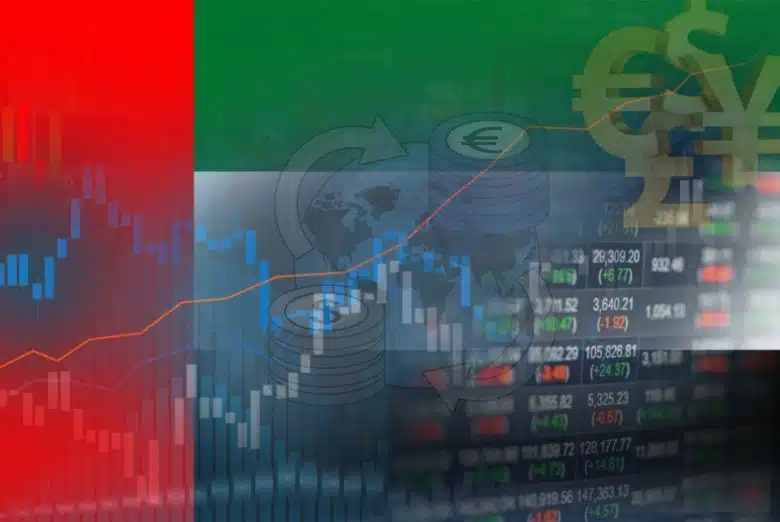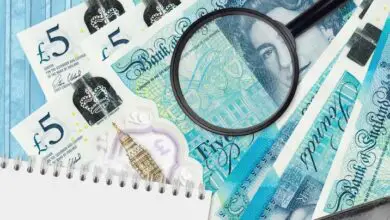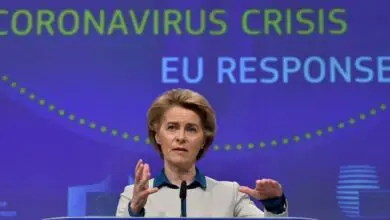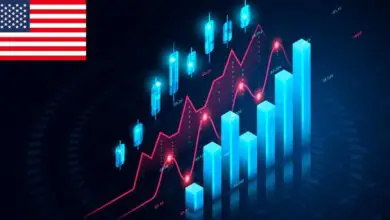Exploring the forex market in the UAE: Trends and analysis

Over 1,500 American companies operating across the Middle East, Africa, Europe, and Asia have their global headquarters in the United Arab Emirates (UAE), which has been the top market for American exports to the Middle East and Africa for the past 12 years. The UAE’s vibrant economy is diversifying as it works to become a knowledge economy over the coming ten years.
The UAE is a desirable market for American exporters due to its openness to international trade and advantageous location as a gateway to the region, which opens up business opportunities. The boom in financial inflow in UAE has also increased the cash flow in the forex market. In this exploration, we will delve into the trends and analysis defining the UAE’s forex market.
Historical Trends in the Uae Forex Market
Over the past few years, the foreign exchange market in the Middle East has grown quickly. The sector has flourished from a very small base because of a low-yield environment and rising investor interest. The retail currency trading market in the Middle East accounted for 8% of the global average daily volume of forex trading in April 2013, according to data from the Bank for International Settlements (BIS).
The UAE was a late adopter of forex as an asset class. It has now grown a sizable share. Just ten years ago, the market was a baby. Investors were primarily using real estate and stocks to hedge their deal transactions. It has now grown to a region of extreme cash flow.
One of the most significant historical trends in the UAE forex market is the introduction of the AED. The AED was introduced in 1973, replacing the Qatar and Dubai Riyal. Introducing a local currency helped establish a stable and independent financial system in the country. Since then, the AED has been a critical component of the UAE forex market, with its value being pegged to the US dollar.
The currency peg is another crucial trend in the forex market in the UAE. The UAE dirham and the US dollar were fixed at a fixed exchange rate of 3.67 AED for every USD in 1997. The currency peg has assisted in preserving the AED’s stability and made it simpler for traders to forecast currency movements. Additionally, it has increased the forex market’s allure for foreign investors and companies.
The rising oil price was a significant trend in the UAE forex market during the early 2000s. As a significant oil exporter, the country saw an increase in revenue due to the rise in oil prices. Consequently, the UAE forex market expanded as traders and investors sought investment opportunities.
The Current State of the UAE Forex Market
The Middle East now makes up 8% of the global forex market. The forex market was in its infancy just ten years ago. Before the global financial crisis, investors were more interested in hedge funds and real estate investment, but this changed as investors realized the advantages of forex trading. According to analysts at Bloomberg, regional forex trading increased by 30% in 2015, significantly more than the 16% global growth year over year.
Forex traders trade in the same industries in the UAE as in London, New York, and Tokyo, but their trading volume is growing much more quickly. This, according to analysts, reflects the Gulf’s strategic position at the intersection of the world’s time zones and expanding investment opportunities. The country also has the best forex broker in UAE market which provides a safe experience to traders.
The UAE is doing exceptionally well when it comes to any financial market. The first country to develop the essential framework for forex trading was the United Arab Emirates, particularly Dubai. Dubai currently leads the way for regional FX transactional flows. In 2015, INR worth more than $1.5 billion was exchanged daily. However, the most common currency pairs were GBP-USD, EUR-JPY, and EUR-USD. In uncertain economic times, gold (XAG) is considered a haven alternative, and more risk-averse investors choose the XAG-USD pair.
Future Outlook of the UAE Forex Market
The UAE’s foreign exchange market is expected to expand in the upcoming years due to several factors, including its efforts to diversify its economy, a favorable regulatory environment, and its advantageous position. Here is a closer look at the UAE FX market’s prospects for the future.
The growing usage of technology is one of the future changes in the forex market in the UAE. Advanced analytical tools, mobile trading platforms, and trading systems based on artificial intelligence are already being adopted by the market. With these technologies, traders can access the market more efficiently and make better trading judgments. We may anticipate seeing more automation and innovation in the forex market in the UAE as a result of the growing usage of technology.
The expansion of retail trading is a further trend in the FX market in the UAE. Due to the availability of free forex trading platforms and the simplicity of setting up trading accounts, the market is becoming more accessible to retail traders. This trend is anticipated to continue as more traders look to join the market.
The growth of social trading is another innovation that can impact the FX market in the future. Trading methods and insights can be shared on social trading platforms, fostering a community of traders who can share knowledge and advice. The forex market might become more open thanks to this innovation, opening it up to new players.
Conclusion
The forex market in the UAE is vibrant and expanding, providing traders—including those in Dubai—with a wide range of opportunities. In this post, we looked at past forex market trends in the United Arab Emirates, assessed how events around the world affected the market, and talked about market prospects going forward.
One of the critical findings from our analysis is that the UAE forex market has been increasing gradually over the years, driven by factors such as the country’s economic diversification efforts and favorable regulatory environment. We also witnessed that the market is susceptible to significant world events like political unrest, economic sanctions, and oil price shifts, and traders need to be equipped to deal with these difficulties.
Going ahead, we anticipate that the UAE forex market will continue to expand due to the adoption of new technology and the appearance of new trading opportunities. The market is also expected to increase in retail trading, opening it up to traders of all experience levels. The UAE forex market is a vibrant, expanding sector that offers traders, including those in Dubai, several chances. In this post, we looked at past forex market trends in the United Arab Emirates, assessed how events around the world affected the market, and talked about market prospects going forward.



